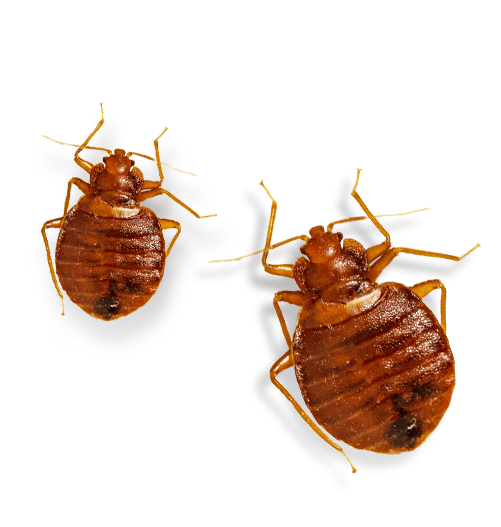Efficient Bed Bug Exterminator: DC Solutions with Heat Treatment
Efficient Bed Bug Exterminator: DC Solutions with Heat Treatment
Blog Article
Checking Out the Scientific Research Behind Bed Bug Warm Treatments as a Lasting Pest Administration Approach
In the realm of bug monitoring, the quest for reliable and sustainable services continues to be a consistent pursuit. One such technique that has actually obtained grip in recent times is making use of warm therapies to battle bed pest infestations. By taking advantage of the scientific research behind thermal fatality factors for these relentless pests, heat treatments provide an appealing option to typical chemical-based approaches. The intricacies of how heat efficiently gets rid of bed insects and the wider ramifications for sustainable insect management practices make this a topic worth exploring further.
Bed Pest Warm Treatment Refine

Thermal Fatality Factor for Bed Insects
Subjecting bed bugs to raised temperature levels beyond their thermal tolerance range is crucial for attaining efficient elimination in heat treatment procedures. The thermal death point for bed pests refers to the temperature at which these parasites can not make it through. Research shows that bed insects start to die when subjected to temperatures over 113 ° F(45 ° C) for a sustained duration. As the temperature level increases, so does the death rate of bed bugs. At around 118 ° F(48 ° C ), bed pests begin to pass away quickly, with a death rate of virtually 99% within minutes of exposure. This demonstrates the sensitivity of bed insects to high temperatures and highlights the performance of heat therapies in eliminating infestations. By getting to and maintaining temperatures over the thermal death factor for bed bugs, bug management experts can ensure thorough elimination of bed insect populaces, including hard-to-reach areas where chemical treatments may be much less effective. Comprehending the thermal fatality point for bed insects is essential for carrying out effective heat treatment approaches and achieving sustainable parasite management results.
Advantages of Warmth Treatments
Having actually developed the essential thermal fatality factor for bed pests, it is important to now explore the significant benefits that warmth therapies provide in efficiently eliminating these resilient pests. When contrasted to typical chemical techniques, heat therapies existing several essential advantages. Among the primary benefits is that warm can penetrate deep right into fractures and crevices where bed bugs conceal, guaranteeing that even one of the most hard-to-reach areas are warmed to dangerous temperatures. This thorough method not just eliminates real-time pests yet additionally targets bed pest eggs, stopping future infestations.
Additionally, warmth therapies are non-toxic and ecologically pleasant, making them a sustainable parasite management technique. Unlike chemical pesticides, warm therapies do not leave unsafe residues that can position dangers to human wellness or the environment. This aspect is particularly look at here now crucial in delicate settings such as hospitals, schools, and suburbs where chemical use may not be desirable.
Furthermore, warm treatments have a high success rate in getting rid of bed insect invasions in a single treatment, decreasing the requirement for several check outs and lessening interruption to passengers. This performance not just conserves time and money but also offers satisfaction to those dealing with bed pest troubles.
Performance of Warm Treatment

Research study researches have actually regularly demonstrated the performance of heat treatments in accomplishing a high price of bed pest death. Correctly carried out warmth therapies can reach all the gaps and splits where bed bugs may be harboring, ensuring a comprehensive method to extermination. Additionally, heat therapies have the included my explanation advantage of eliminating you can try this out bed bug eggs, which are commonly immune to typical chemical therapies. Generally, the efficiency of warm treatments in eliminating bed bug infestations makes them a sustainable and reliable pest monitoring approach.
Sustainable Pest Monitoring Advantages
Executing lasting parasite management methods supplies long-term benefits for both the atmosphere and public wellness. By making use of methods such as heat treatments for bug control, we can lower the dependence on hazardous chemical pesticides that can have negative results on ecosystems and human health - bed bug heat treatment. Lasting parasite monitoring strategies help in protecting biodiversity by targeting certain parasites without damaging non-target organisms, thereby maintaining a balanced ecosystem
Additionally, sustainable pest management techniques add to the total health and wellness and wellness of the public. By minimizing direct exposure to harmful chemicals used in traditional parasite control approaches, warm treatments provide a more secure option for bug administration in domestic, commercial, and public rooms. This reduction in chemical usage additionally assists in avoiding pesticide deposits from polluting water, air, and soil, securing environmental top quality.
Final Thought
To conclude, bed pest warm therapies have been revealed to be a reliable and sustainable pest administration strategy. The thermal fatality point for bed insects makes them susceptible to warmth treatments, which have many advantages over standard chemical treatments. The efficiency of warmth treatments in removing bed bug problems while reducing ecological influence highlights the capacity of this approach as a sustainable service for parasite control.
The bed bug warm therapy process entails raising the temperature within ravaged areas to a level that successfully eliminates bed insects and their eggs. By getting to and keeping temperatures above the thermal fatality factor for bed pests, pest administration specialists can ensure extensive removal of bed pest populaces, consisting of hard-to-reach areas where chemical treatments may be less efficient. One of the main benefits is that warmth can pass through deep into cracks and crevices where bed insects conceal, making certain that also the most hard-to-reach locations are warmed to dangerous temperatures. Unlike chemical treatments that may leave behind immune populaces, warmth therapies supply a safe and environmentally friendly remedy that can penetrate deep into furnishings, wall surfaces, and various other hard-to-reach locations where bed insects hide.
The thermal death point for bed bugs makes them susceptible to warmth therapies, which have countless benefits over standard chemical treatments.
Report this page